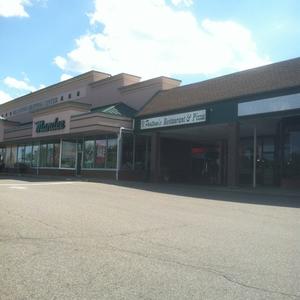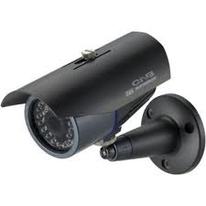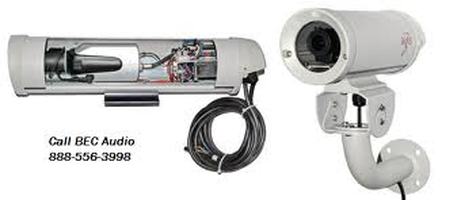Kinnelon
Kinnelon's history is written in its rugged hills.
Its nearly twenty square-mile area lies within the eastern, or Ramapo, belt of the "Highlands" of New Jersey. These mountains, which once shaped the destiny of colonial independence, which are prized today for their beauty and serenity, are a curious mixture of the most ancient and most recent rocks in the world. The bedrock of these ridges, heavy with minerals, was formed nearly a billion years ago; compressed by the weight of mountains and seas over the centuries; then uplifted and finally carved during the last Ice Age.

Into these wooded hills the Lenni-Lenape, a tribe of Delaware Indians, ventured from their trails along the Pequannock River. They noticed a slant to the rocks and so named the mountains "Ramapo." The land where thick mists rose from the lakes, tradition says they called "place where smoke rises." In 1664, King Charles the Second of England granted the territory to the Duke of York, who conveyed it to Lord Berkeley and Sir George Carteret. Carteret, who had been Bailiff of the British Channel Isle of Jersey, named the land New Jersey. Carteret's nephew Captain Philip Carteret was sent to govern with a document called "Concessions and Agreements" to encourage settlers to the area. In 1676 the Province of New Jersey was officially divided into East and West Jersey. Six years later, after Carteret's death, the East Jersey Board of Proprietors consisted of twelve men, one of whom was William Penn.
In 1695, negotiating a purchase, first with the Indians, and then with the Board of Proprietors, the first white settlers led by Arent Schuyler, came to the Pompton region, and claimed the most desirable land--meadows and streams. The hills of Kinnelon were a lovely frame for the valley farms and were not appreciated for their mineral and timber wealth until just prior to the War for Independence.
Among the families purchasing land grants from the Proprietors in the 17th and 18th centuries were the Meads in the Meadtown area, the Stickles in the Smoke Rise area, and the Cobbs. The old farmhouse and cemetery in Fayson Lakes were built by the Federicks family on land bought from the cobbs' patent. Sprawling Pequannock Township, which included Kinnelon, Butler, Pompton Plains, Riverdale, Montville, and Lincoln Park, etc., was formed in 1740.
Early in the 1700's, the first iron forges and furnaces were built in locations where the five essentials for smelting were available. These were iron ore, charcoal fuel, limestone flux, water power, and nearness to markets. The Charlotteburg Furnance was opened in 1766 on the Pequannock River by Peter Hasenclever of the London Company. He was the first manager to dam streams to conserve water power, to line the furnaces with durable slate, and to roof the works for weather protection. Ruins of the furnace still lie under the water of the Pequannock Reservoir, south of Smoke Rise's North Gate. Other forges were built on the Pequannock River at Smith's Mills and Butler, and on the outlet of Stickle's Pond (Lake Kinnelon) on Stony Brook.
The typical furnace was a stone pyramid on the side of a hill. A platform was built along which layers of ore, fuel, and flux were wheeled to the opening atop the furnace. The mixture was dropped into the furnace and ignited. Air blasts from bellows powered by water wheels kept the fires intense. Gradually, the iron ore melted and the heavy metal flowed out at the base of the furnace into troughs of sand on the casting floor. The arrangement of these cooling beds resembled a sow and her piglets: thus the term "pig iron." Slag floating above the iron was drawn off and discarded. The pig iron was further purified and shaped in the forge.
Charcoal was painstakingly prepared in the surrounding hills. Trees had to be cut down during the wintertime, trimmed to the proper size, stacked in cone-shaped piles, and topped with earth and damp leaves. Once ignited, it took three to ten days to char the wood properly. When furnaces were in full blast, it took an acre of trees a day to feed the fires. Some of Kinnelon's roads were once wagon trails where teams of oxen hauled charcoal to the furnaces.
England demanded that the colonies ship all their iron to the mother country and buy from her all their finished hardgoods. By 1770, one seventh of the world's iron was being produced in this region, and England's unjust law soon made rebels of the people of New Jersey. The Highlands' natural barrier to transportation kept the mines and forges safe from British attacks, and left the colonists with a plentiful supply of iron for guns, shot and tools. A huge iron chain forged in this area stretched across the Hudson River near West Point to bar British ships. The hills rang with the banging of trip hammer, the rumble of wagons, and the roar of many fires.
In 1695, negotiating a purchase, first with the Indians, and then with the Board of Proprietors, the first white settlers led by Arent Schuyler, came to the Pompton region, and claimed the most desirable land--meadows and streams. The hills of Kinnelon were a lovely frame for the valley farms and were not appreciated for their mineral and timber wealth until just prior to the War for Independence.
Among the families purchasing land grants from the Proprietors in the 17th and 18th centuries were the Meads in the Meadtown area, the Stickles in the Smoke Rise area, and the Cobbs. The old farmhouse and cemetery in Fayson Lakes were built by the Federicks family on land bought from the cobbs' patent. Sprawling Pequannock Township, which included Kinnelon, Butler, Pompton Plains, Riverdale, Montville, and Lincoln Park, etc., was formed in 1740.
Early in the 1700's, the first iron forges and furnaces were built in locations where the five essentials for smelting were available. These were iron ore, charcoal fuel, limestone flux, water power, and nearness to markets. The Charlotteburg Furnance was opened in 1766 on the Pequannock River by Peter Hasenclever of the London Company. He was the first manager to dam streams to conserve water power, to line the furnaces with durable slate, and to roof the works for weather protection. Ruins of the furnace still lie under the water of the Pequannock Reservoir, south of Smoke Rise's North Gate. Other forges were built on the Pequannock River at Smith's Mills and Butler, and on the outlet of Stickle's Pond (Lake Kinnelon) on Stony Brook.
The typical furnace was a stone pyramid on the side of a hill. A platform was built along which layers of ore, fuel, and flux were wheeled to the opening atop the furnace. The mixture was dropped into the furnace and ignited. Air blasts from bellows powered by water wheels kept the fires intense. Gradually, the iron ore melted and the heavy metal flowed out at the base of the furnace into troughs of sand on the casting floor. The arrangement of these cooling beds resembled a sow and her piglets: thus the term "pig iron." Slag floating above the iron was drawn off and discarded. The pig iron was further purified and shaped in the forge.
Charcoal was painstakingly prepared in the surrounding hills. Trees had to be cut down during the wintertime, trimmed to the proper size, stacked in cone-shaped piles, and topped with earth and damp leaves. Once ignited, it took three to ten days to char the wood properly. When furnaces were in full blast, it took an acre of trees a day to feed the fires. Some of Kinnelon's roads were once wagon trails where teams of oxen hauled charcoal to the furnaces.
England demanded that the colonies ship all their iron to the mother country and buy from her all their finished hardgoods. By 1770, one seventh of the world's iron was being produced in this region, and England's unjust law soon made rebels of the people of New Jersey. The Highlands' natural barrier to transportation kept the mines and forges safe from British attacks, and left the colonists with a plentiful supply of iron for guns, shot and tools. A huge iron chain forged in this area stretched across the Hudson River near West Point to bar British ships. The hills rang with the banging of trip hammer, the rumble of wagons, and the roar of many fires.
You must ensure that you pay a lot of attention to choosing a Kinnelon security cameras company. The expert and specialist personnel of these specialist companies can install the perfect system to make your home or office safe and secure and you can also keep a constant eye on all of your property. Opt for nothing less than the best of these companies to ensure you have complete security in terms of surveillance, as these are among the most important components of any security system.
One of the most common and popular security features installed are surveillance cameras and you can get whatever you need by calling a Kinnelon security cameras contractor. These can be installed almost anywhere and they serve their purpose of ensuring safety to a large extent. They also help you keep a record of the goings on within their field. If you want to get the best of these installed in your home or business, call for the best professionals in the business only; and never compromise!
With advances in technology for security systems, surveillance cameras have become a common feature in many places, so call a Kinnelon security cameras company to get one installed. It is better to choose only qualified and licensed companies to ensure the effectiveness of your security and surveillance. You must ensure you choose only the best of these specialist companies and get expert guidance on usage and maintenance too. Never compromise or cut corners on this front!
If you are looking for a reliable device which can help with the security of your home without being very obvious or difficult to operate, then a surveillance camera is the right choice for you, so ensure that you choose only the best Kinnelon security cameras service so that you need not worry about the quality of the camera or the services you get! Among the most popular of security devices, these have the capability of transmitting images to a monitor and recording them for future playback too.
One of the most common and popular security features installed are surveillance cameras and you can get whatever you need by calling a Kinnelon security cameras contractor. These can be installed almost anywhere and they serve their purpose of ensuring safety to a large extent. They also help you keep a record of the goings on within their field. If you want to get the best of these installed in your home or business, call for the best professionals in the business only; and never compromise!
With advances in technology for security systems, surveillance cameras have become a common feature in many places, so call a Kinnelon security cameras company to get one installed. It is better to choose only qualified and licensed companies to ensure the effectiveness of your security and surveillance. You must ensure you choose only the best of these specialist companies and get expert guidance on usage and maintenance too. Never compromise or cut corners on this front!
If you are looking for a reliable device which can help with the security of your home without being very obvious or difficult to operate, then a surveillance camera is the right choice for you, so ensure that you choose only the best Kinnelon security cameras service so that you need not worry about the quality of the camera or the services you get! Among the most popular of security devices, these have the capability of transmitting images to a monitor and recording them for future playback too.

